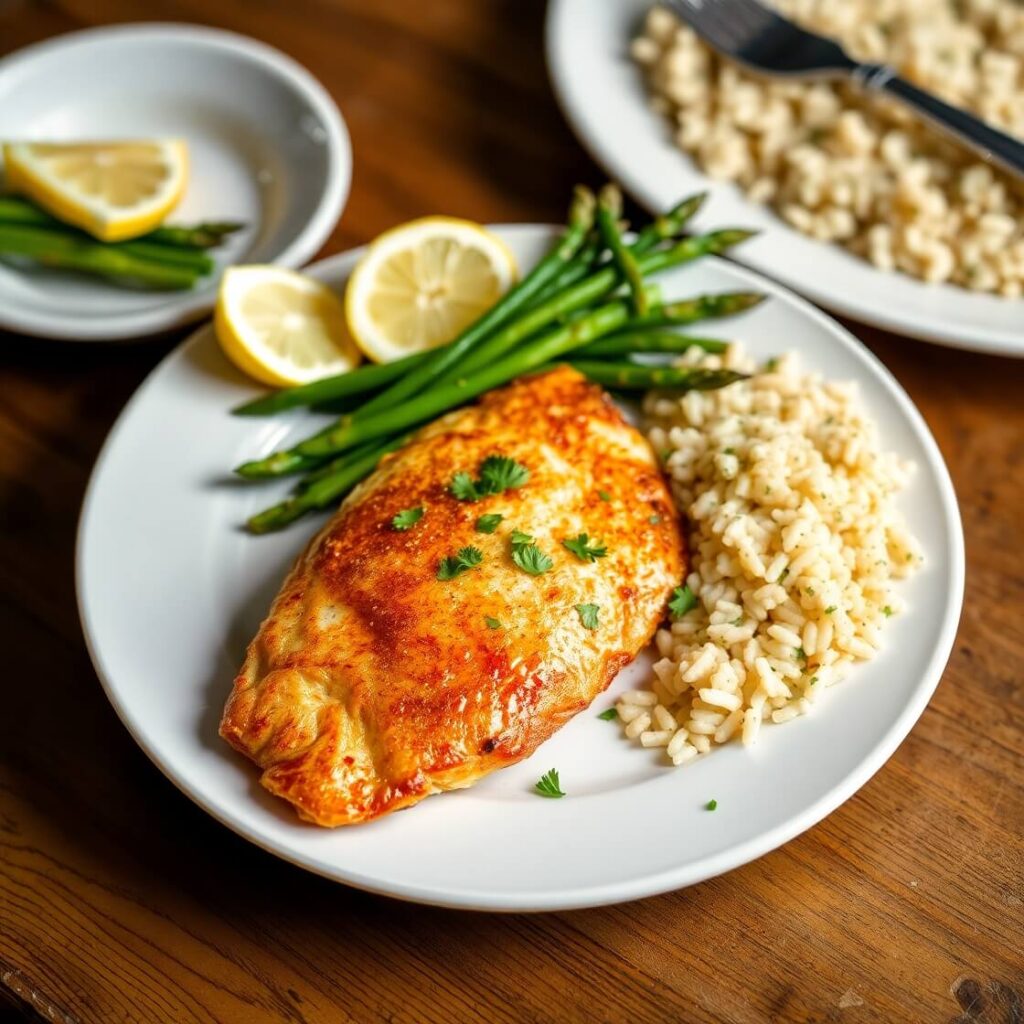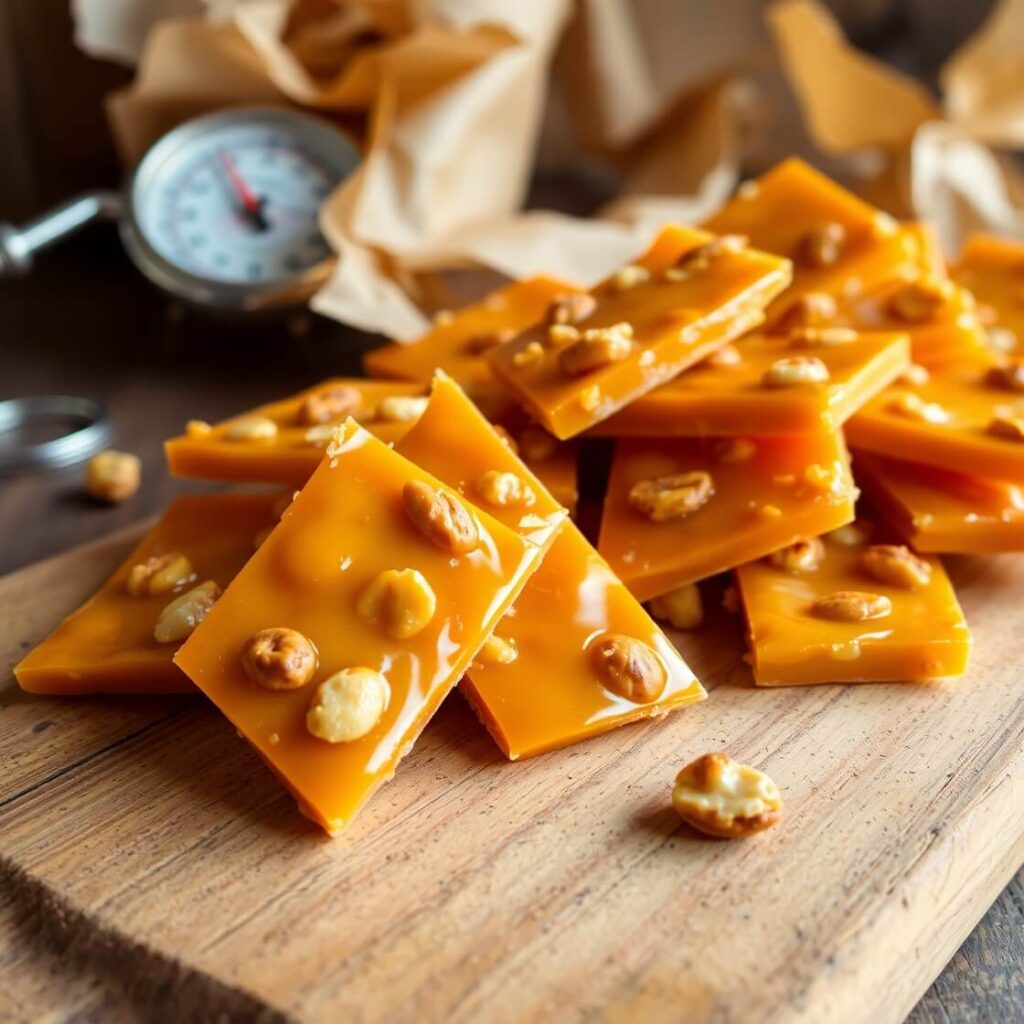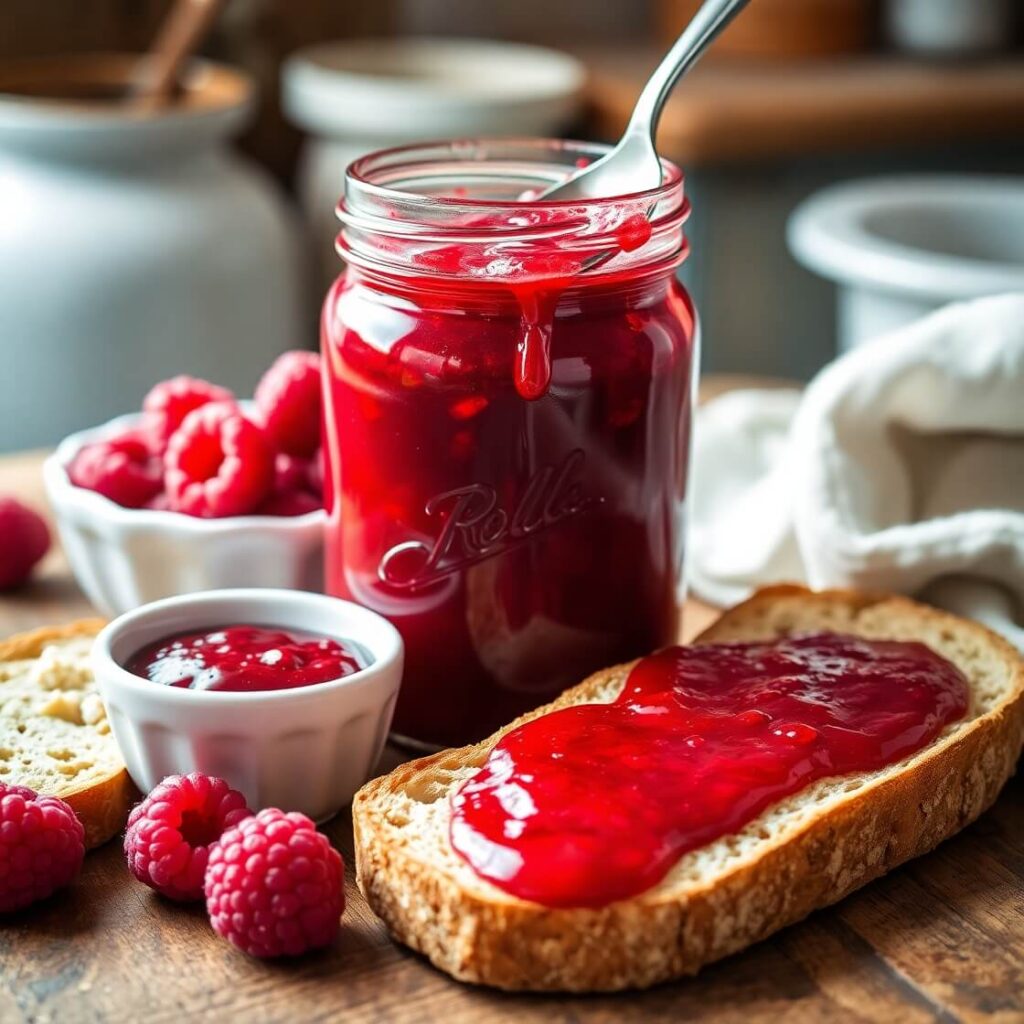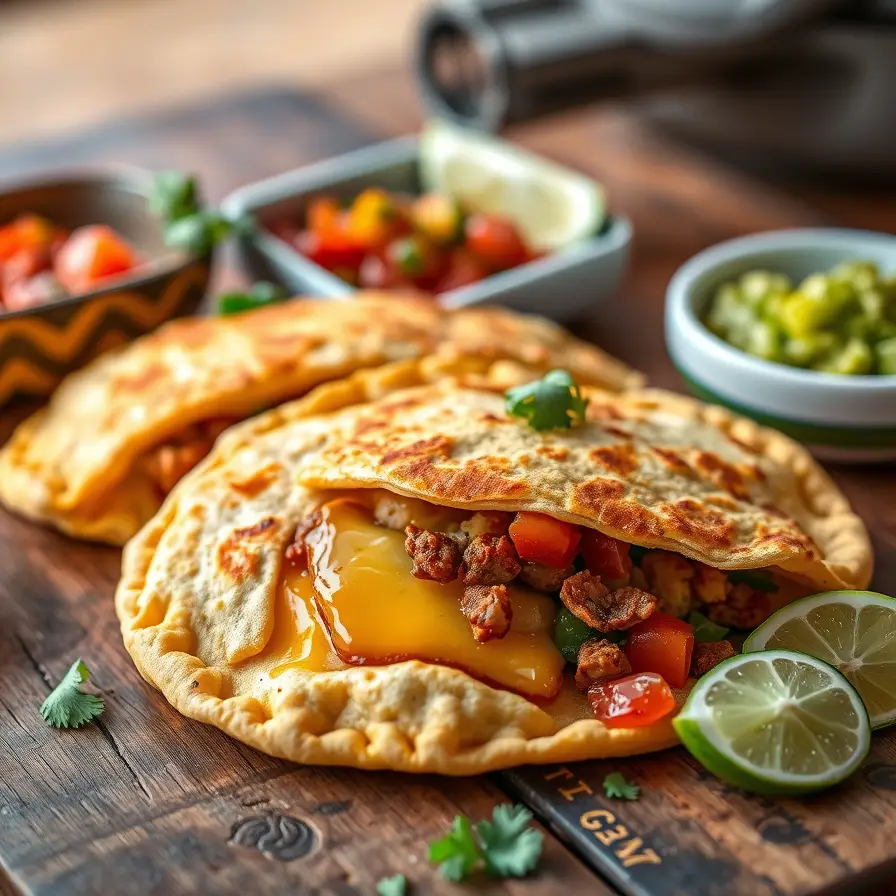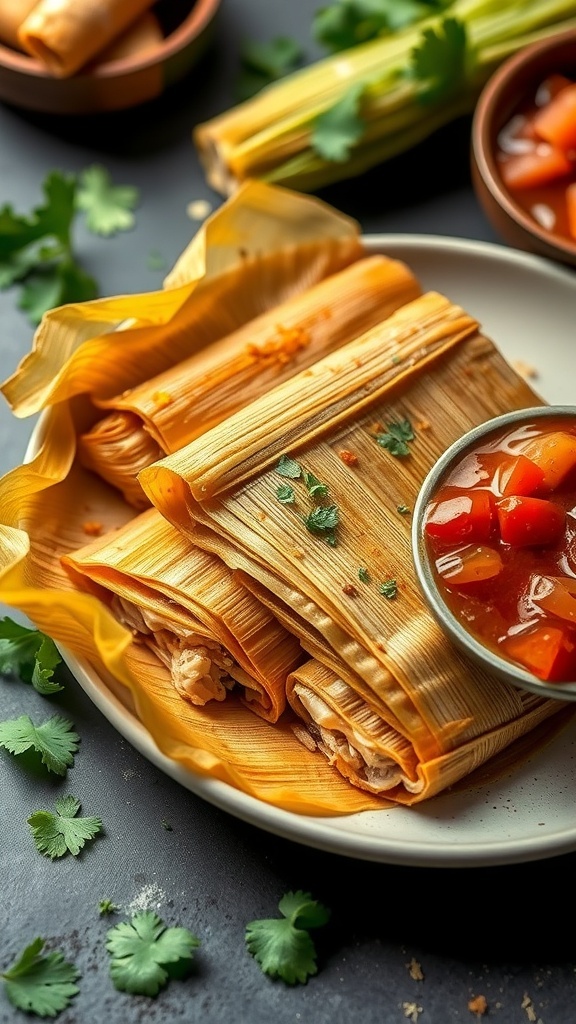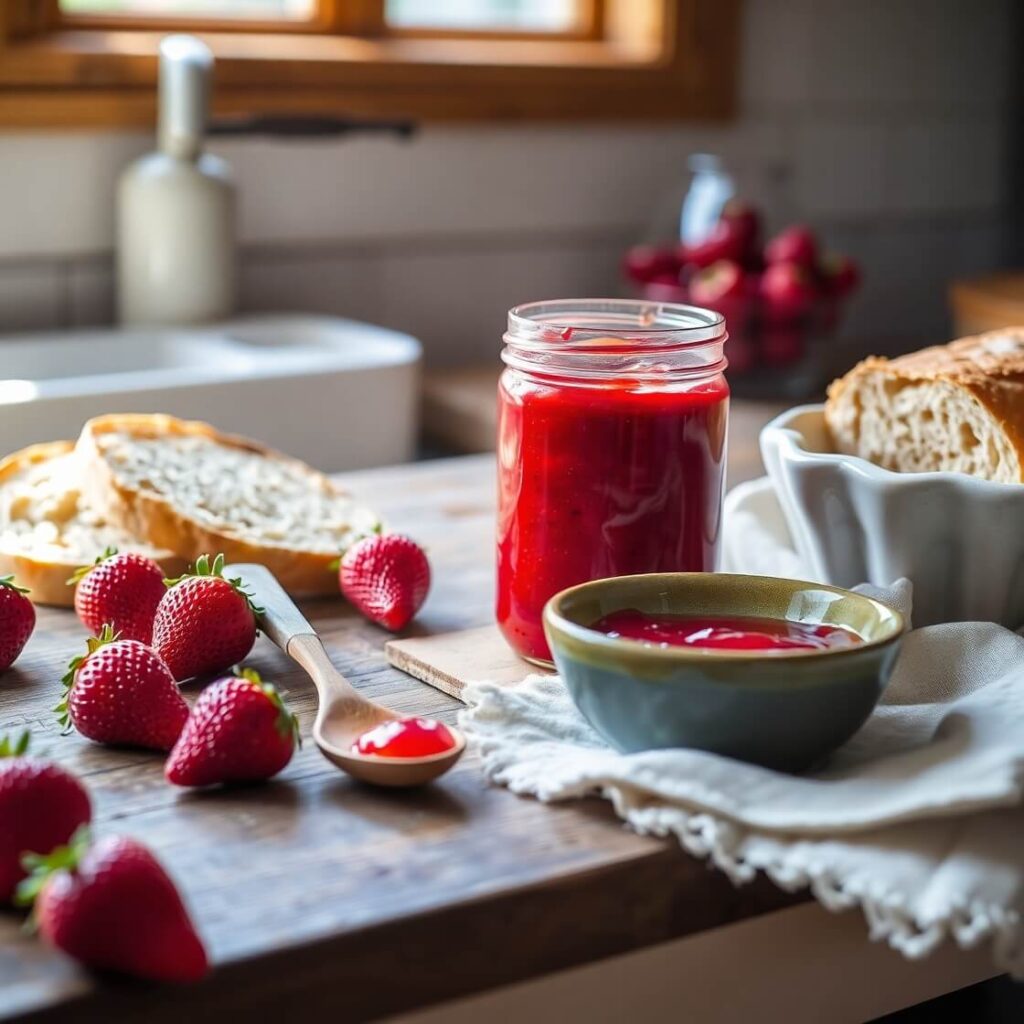Walleye Fish Recipe
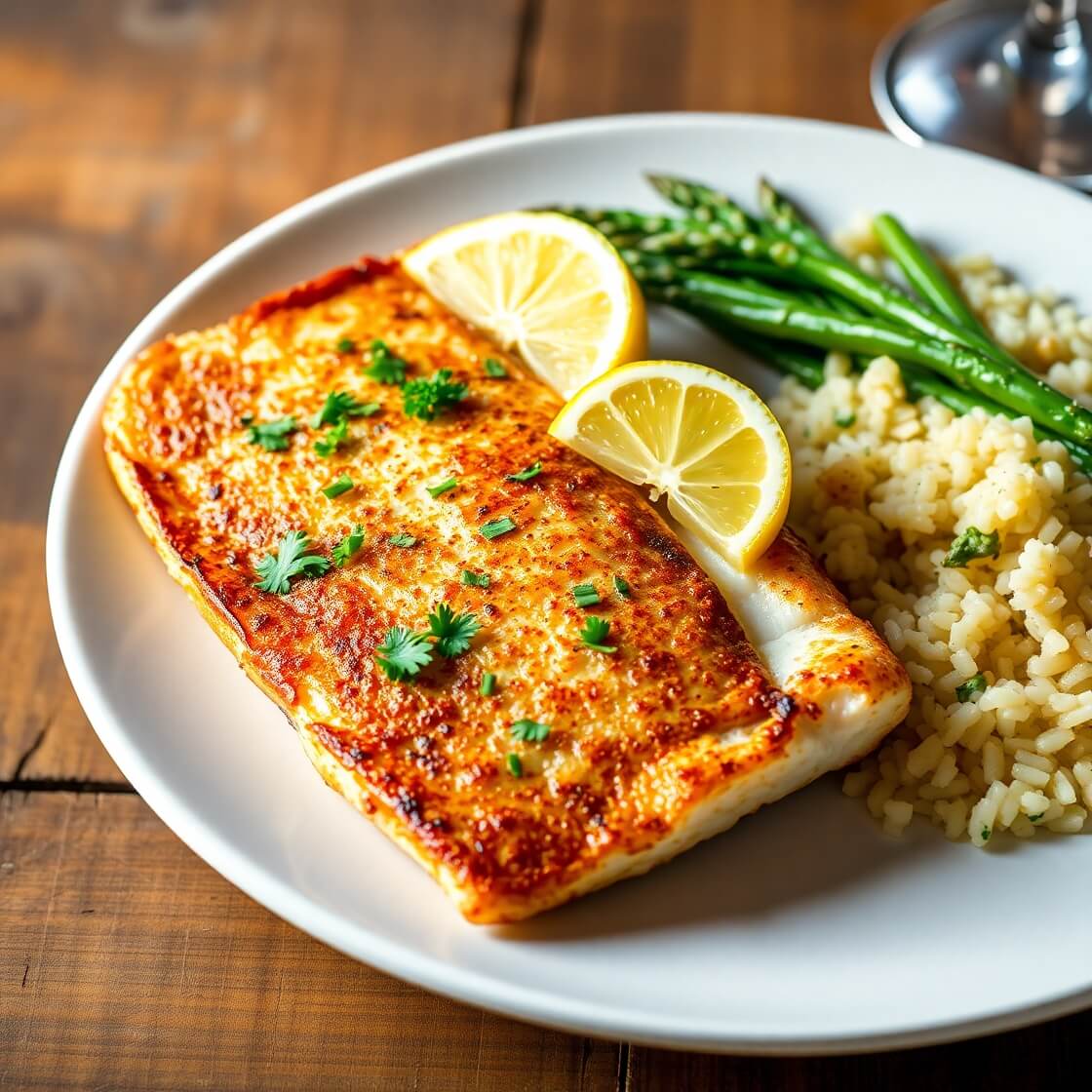
I remember the first time I cooked walleye. It was a breezy summer evening at our family lake cabin in Minnesota, and my uncle had just come back from fishing with a cooler full of fresh catch. As someone who loves cooking seasonal, fresh ingredients, I knew immediately what I had to do. That delicate, flaky white fish deserved more than a simple fry-up—it needed a recipe that would bring out its natural flavors without overpowering them.
Walleye is a freshwater fish that’s beloved in the Midwest and Canada, and for good reason. Its mild, sweet taste and firm texture make it ideal for both beginner cooks and seasoned home chefs. If you’re looking for a dish that’s light, flavorful, and quick to prepare, this walleye recipe is exactly what you need.
What makes this recipe so special? It’s simple, but elegant. It’s the kind of dish that feels like a restaurant-quality meal, yet you can whip it up in less than 30 minutes at home. Whether you’re making dinner for the family or planning a romantic date night, this walleye dish hits the mark. Stick with me—you’re going to want to bookmark this one.
Why I Love This Recipe
There’s a certain magic in recipes that allow the main ingredient to shine—and that’s what this walleye recipe does beautifully.
Walleye is a prized fish, often considered one of the best-tasting freshwater fish in North America. It’s not overly fishy, and it has a clean, slightly sweet flavor that pairs well with lemon, butter, herbs, or even a subtle spice blend. That versatility is why I come back to this recipe over and over again.
This recipe allows you to pan-sear the fish to a perfect golden crust, keeping the inside moist and flaky. With just a few high-quality ingredients and a simple technique, you’ll get a dish that looks and tastes impressive—without hours of prep or cleanup. It’s ideal for busy weeknights, but also special enough to serve to guests.
And the best part? It’s adaptable. Whether you caught the walleye yourself or picked it up fresh from a local market, this method brings out its best qualities. It’s not deep-fried or overly seasoned—just clean, crisp, and utterly satisfying.
Ingredients for Walleye Fish Recipe
The secret to a good walleye recipe is simplicity. You don’t need a long list of ingredients to make something exceptional—you just need the right ones.
Here’s what I use for this dish, and why each one matters:
- Fresh walleye fillets – The star of the show. Look for firm, moist fillets with a mild scent.
- Flour – A light dusting creates a crispy, golden crust. You can also use almond flour if you prefer gluten-free.
- Salt and freshly ground black pepper – Enhances the natural flavor of the fish.
- Paprika (optional) – Adds a subtle smoky warmth and color.
- Butter and olive oil – The combo gives a rich flavor and perfect sear without burning.
- Fresh lemon juice – Brightens everything and complements the fish.
- Fresh parsley – For a fresh, herbal finish that adds a pop of green.
You can also add a pinch of garlic powder or a few capers for a little extra zing, but I usually keep it clean and classic. This recipe proves that you don’t need to overcomplicate things to create something delicious.
How Much Time Will You Need
This recipe is a winner not just for its taste, but also for its speed.
Here’s the rough timing breakdown:
- Prep time: 10 minutes
- Cook time: 10-12 minutes
- Total time: Around 20–25 minutes
That means from fridge to fork, you’ll be enjoying your meal in under half an hour. This is exactly the kind of quick, no-fuss recipe I rely on for busy weeknights when I want something nourishing and flavorful without spending hours in the kitchen.
How to Make This Walleye Fish Recipe
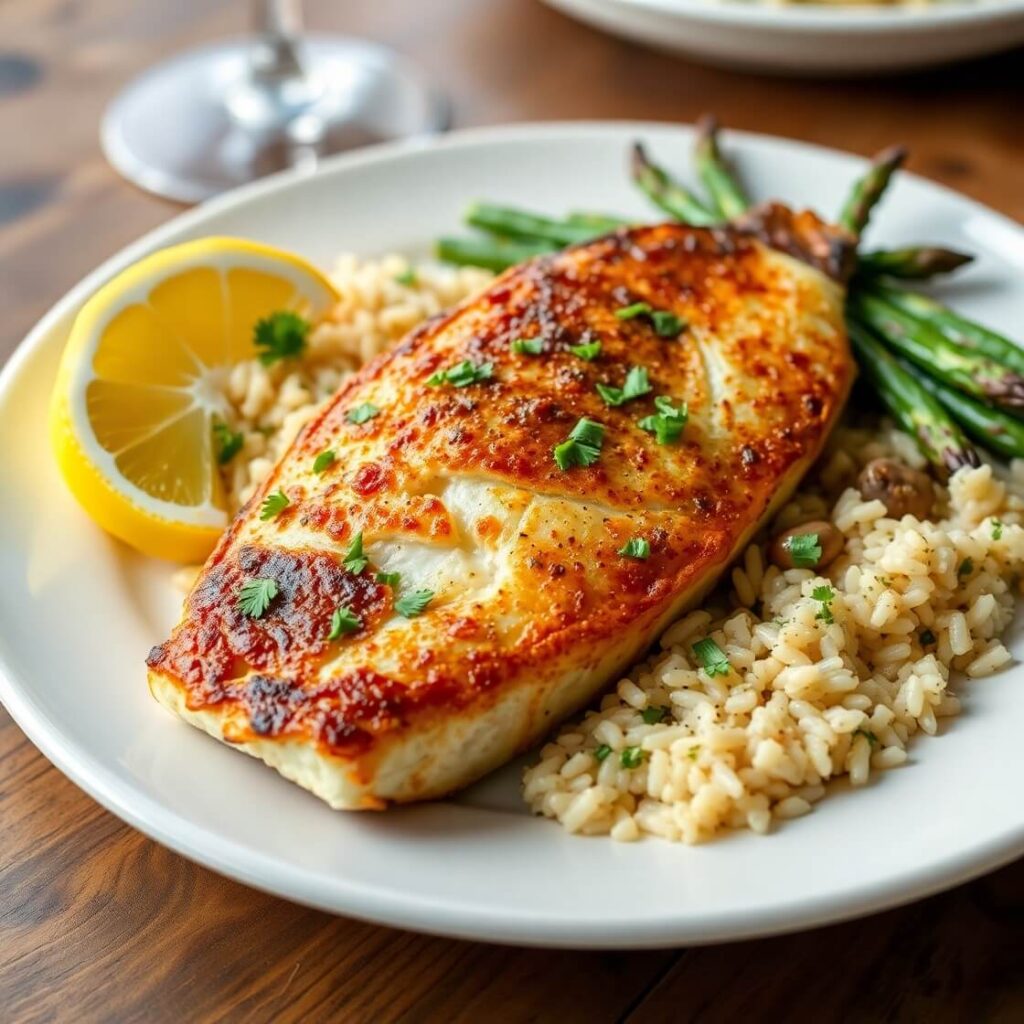
Here’s your easy step-by-step guide to making the perfect walleye. I’ve tested and tweaked this method to make sure it’s foolproof, even for beginner cooks.
Step 1: Pat the fillets dry
Start by using a paper towel to pat the walleye fillets completely dry. This step is key for getting a crispy crust. If the fish is too moist, it won’t sear properly.
Step 2: Season and dredge
In a shallow dish, mix together flour, salt, pepper, and paprika. Dredge each fillet lightly in the seasoned flour, making sure to coat both sides. Tap off the excess.
Step 3: Heat your pan
In a large skillet, heat 1 tablespoon of olive oil and 1 tablespoon of butter over medium-high heat. Wait until the butter is foamy but not browned. This combo helps prevent burning and gives the fish great flavor.
Step 4: Cook the fish
Carefully place the fillets in the hot pan, skin-side down if they still have skin. Don’t overcrowd—cook in batches if needed. Let them cook undisturbed for 3–4 minutes until golden brown. Then flip and cook for another 2–3 minutes.
You’ll know it’s done when the fish flakes easily with a fork and has a nice golden crust.
Step 5: Add lemon and herbs
Once the fillets are done, squeeze fresh lemon juice over the top and sprinkle with chopped parsley. That’s it! You’re ready to serve.
Substitutions
Sometimes you need to work with what you’ve got. This recipe is flexible and forgiving—and that’s why I love it.
Here are some substitutions that work well:
- Gluten-free: Swap all-purpose flour for almond flour or a gluten-free blend. You’ll still get that lovely crisp without the gluten.
- Butter alternative: If you’re dairy-free, try using ghee or a plant-based butter. You could also use all olive oil if needed, though you’ll lose some richness.
- Fish alternative: Can’t find walleye? This method works beautifully with cod, haddock, or tilapia—just adjust the cooking time slightly based on thickness.
- Herbs: Don’t have parsley? Use dill, chives, or even thyme. Fresh herbs always elevate the dish.
This recipe is a great canvas—you can tweak it to suit your pantry without losing the integrity of the flavor.
Best Side Dishes for Walleye
Pairing the right sides with your walleye can elevate your whole meal. Here are a few of my go-to favorites:
- Garlic Roasted Asparagus – The earthy crunch of roasted asparagus complements the mild fish beautifully.
- Lemon Herb Rice Pilaf – Light and fluffy with subtle citrus notes, it soaks up any extra lemon-butter sauce from the fish.
- Creamy Dill Potato Salad – Adds a cooling, creamy contrast that balances the crisp fish texture.
Choose one or mix and match depending on the occasion. These sides are easy, delicious, and perfect for making your plate look complete and inviting.
Serving and Presentation Tips
If you’re like me, you believe we eat with our eyes first. There’s something so satisfying about plating a beautiful meal—even if it’s just for a Tuesday night dinner at home.
When serving walleye, I like to keep things simple but elegant. Lay the golden-brown fillet on a clean white plate so the crispy crust pops visually. A small pile of lemon herb rice beside it gives contrast in both texture and color. Drizzle a little melted butter or pan juices over the top for a glistening finish, and then garnish with fresh parsley or microgreens for a vibrant, fresh touch.
Don’t forget the lemon wedges! They not only add brightness to the flavor but also give your plate a cheerful, zesty look. A thin slice of grilled lemon is also a nice upgrade if you’re going for a more elevated presentation.
For dinner parties, I like to serve walleye with a chilled white wine, like Sauvignon Blanc or Pinot Grigio. Set the table with linen napkins and light a candle—and suddenly this humble fish turns into something really special.
Tips and Tricks to Make This Recipe Even Better
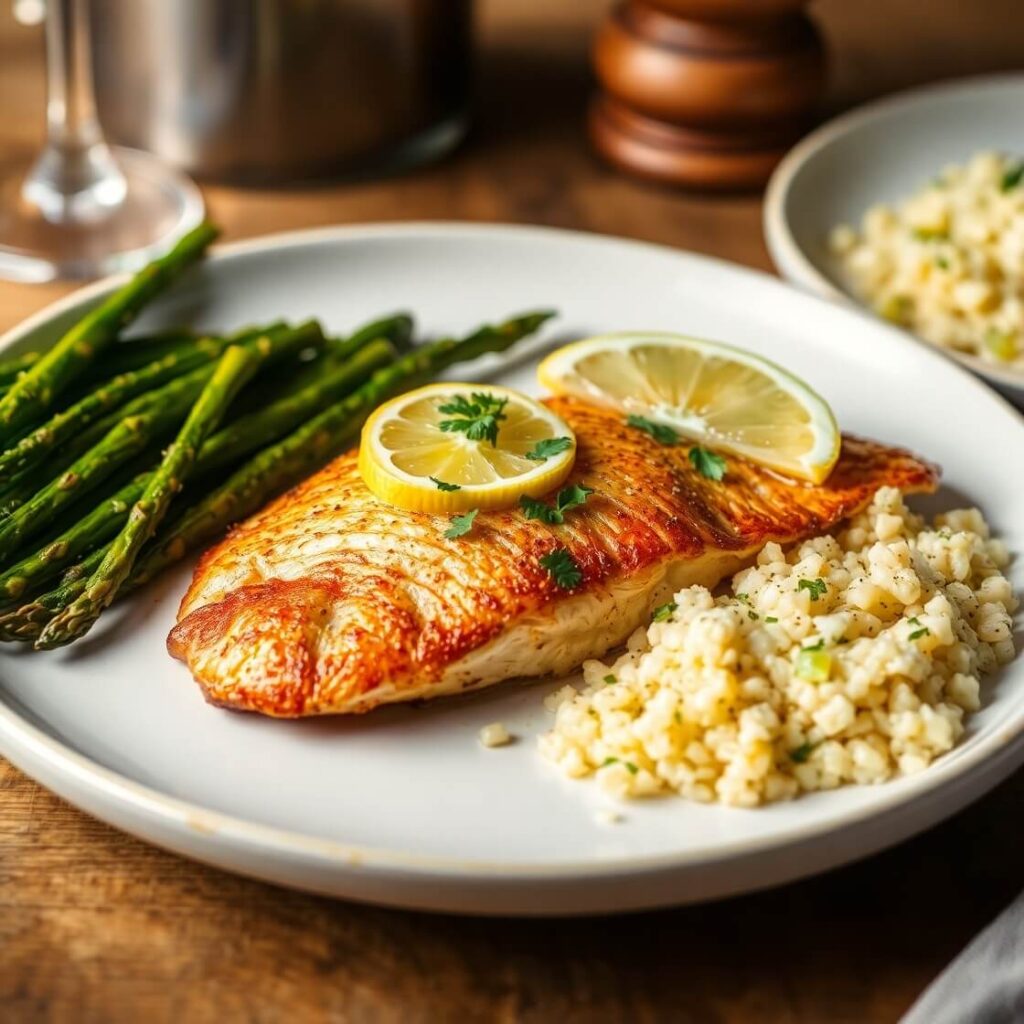
The beauty of this dish lies in the details. While the method is simple, a few small tricks can take it from good to absolutely perfect:
- Use a fish spatula: A flexible fish spatula makes it easier to flip the fillets without breaking them.
- Don’t skip drying the fish: Moisture is the enemy of crispiness. Always pat the fillets dry first.
- Let the pan get hot enough: Make sure the oil and butter are fully heated before adding the fish. This creates that golden crust.
- Avoid moving the fish too soon: Let it sit in the pan undisturbed so the crust can form. You’ll know it’s ready to flip when it releases easily.
- Add a finishing touch of compound butter: If you want to make it extra special, top your cooked walleye with a pat of lemon-herb butter right before serving. It’ll melt into a silky sauce that’s to die for.
These tiny details might seem small, but they really do elevate the dish.
Common Mistakes to Avoid
I’ve made this dish dozens of times, and here are some mistakes I’ve learned to steer clear of:
- Overcooking the fish: Walleye is a lean fish and dries out quickly. Once it flakes easily with a fork, it’s done.
- Using too much flour: A light coating is all you need. Too much, and you’ll end up with a gummy crust.
- Overcrowding the pan: Cook in batches if needed. Crowding lowers the temperature and causes the fish to steam instead of sear.
- Skipping seasoning: Don’t forget to season the fish itself—not just the flour. Seasoning each layer builds flavor.
- Using cold fish straight from the fridge: Let it sit at room temperature for 10–15 minutes before cooking so it cooks evenly.
Keep these in mind, and your walleye will turn out restaurant-quality every time.
How to Store It
Let’s say you made a couple of extra fillets (or maybe you’re meal-prepping). Here’s how to store your leftover walleye to keep it fresh and delicious:
- Refrigerate: Let the fish cool completely, then store it in an airtight container in the fridge for up to 2 days.
- Reheat gently: Reheat in a skillet over low heat with a splash of butter or olive oil, or warm in the oven at 275°F for 10–15 minutes. Avoid microwaving if possible—it tends to make the fish rubbery.
- Freezing isn’t ideal: Cooked walleye doesn’t freeze very well, as it can become mushy when thawed. But if you must, wrap it tightly and freeze for up to a month. Reheat straight from frozen in the oven at 300°F.
Fresh is always best, but with the right technique, leftovers can still be enjoyable.
FAQ
Can I bake walleye instead of frying it?
Yes! If you prefer baking, brush the fillets with oil, season, and bake at 375°F for about 12–15 minutes or until the fish flakes easily.
Can I use frozen walleye for this recipe?
Absolutely, just make sure to thaw it completely and pat it dry before cooking. Excess moisture will ruin the crust.
What can I use instead of flour for a gluten-free version?
Almond flour or a 1:1 gluten-free baking mix works perfectly. Even crushed rice crackers or cornmeal can give a lovely crust.
How do I know when the fish is done?
The fillets will turn opaque and flake easily with a fork. The internal temperature should be 145°F if you want to be exact.
Can I use this recipe for other types of fish?
Yes, this method works beautifully for cod, haddock, tilapia, or even perch. Just adjust cook time based on the thickness.
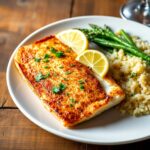
Walleye Fish Recipe
- Total Time: 22 minutes
- Yield: 2 1x
- Diet: Gluten Free
Description
This crispy walleye recipe is the perfect way to enjoy this prized freshwater fish. Lightly dredged in seasoned flour and pan-seared to golden perfection, the fillets are tender and flaky on the inside with a delicate, crisp crust on the outside. Finished with a squeeze of lemon and fresh herbs, this dish is light, flavorful, and ready in under 30 minutes. Ideal for a quick weeknight dinner or an elegant weekend meal.
Ingredients
- 2 fresh walleye fillets (6–8 oz each)
- ½ cup all-purpose flour (or almond flour for gluten-free)
- 1 tsp kosher salt
- ½ tsp black pepper
- ½ tsp paprika (optional)
- 1 tbsp olive oil
- 1 tbsp butter
- Juice of ½ lemon
- Fresh parsley, chopped
Instructions
- Pat walleye fillets dry with paper towels.
- In a shallow dish, mix flour, salt, pepper, and paprika.
- Lightly dredge each fillet in the seasoned flour; shake off excess.
- Heat olive oil and butter in a skillet over medium-high heat.
- Place fillets in the hot pan and sear for 3–4 minutes per side, or until golden brown and cooked through.
- Squeeze lemon juice over fillets and garnish with fresh parsley.
- Serve hot with your favorite side dishes.
Notes
- Letting the fish come to room temp before cooking helps it cook evenly. For an extra touch, try finishing with a pat of lemon herb butter.
- Prep Time: 10 minutes
- Cook Time: 10–12 minutes
- Category: Main Dish
- Method: Pan-Seared
- Cuisine: American
Nutrition
- Serving Size: 2
- Calories: 340
- Sugar: 0g
- Sodium: 420mg
- Fat: 18g
- Saturated Fat: 6g
- Unsaturated Fat: 10g
- Trans Fat: 0g
- Carbohydrates: 12g
- Fiber: 0.5g
- Protein: 34g
- Cholesterol: 95mg

